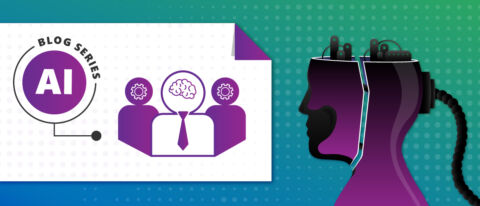This article is the fifth in our ongoing series on AI. You can check out the others below!
- How AI is Used to Surface Content (Office Graph)
- Web 3.0: How We Got Here and Why it Matters
- How AI Automation and Tasking Helps Us Collaborate Better
- Mixing Reality: The Immense Potential of AR, MR, & VR
Chatbot Integration: The Reason It’s the Future of the Workplace
As this blog series has progressed we have addressed key terms and themes around Artificial intelligence (AI), automation, and Virtual Reality (VR). There are already plenty of specific examples for how AI and VR are affecting how users interact with machines and each other.
For those of us in offices or who work in providing services as office workers, the question is still “So what?” Well, AI is well under way in consideration and application for how employees of companies work and complete tasks.
As the Economist Special Report reveals, AI in China, Europe, and the US has taken on different strands of use. Companies of all stripes have increasingly mentioned AI multiple times in their earnings and strategic reports.

Luckily, AI is already here for the end user. Delve, a search and connecting solution from Office 365, leverages Azure AI to promote and suggest connections to users for content and activities.
While this has shown to have some issues, like surfacing sensitive information, the end result is actually positive. While initially awkward and a headache, solutions like Delve unleash other questions regarding artificial intelligence: How can a business sort, organize and leverage all the data generated by office workers?
Many users and organizations openly fear AI in the workplace. Here's why they shouldn't. Click To TweetA user or group of users will need to work with machines to capture information users are generally bad at capturing anyway, such as tagging content with extra metadata. This process still needs human input to steer how machines see datasets. For example, tagging large datasets with information, such as a Business Unit, still requires a user to define exactly what an HR document is and is not.

Once a machine has enough information regarding context of what makes an HR document, it can then scour many thousands of documents which have not been accessed for months or years and tag them with HR. This sort of human-machine relationship can yield benefits for organizations and help with compliance and control of data.
Many users and organizations openly fear AI in the workplace. They should not fear it, but rather learn to work with it! Office workers have already been exposed to components of automation in various iterations over the past 30 years.
Best Practices Guide: Records Management for the Digital Era
The Xerox printer and digital telephony have made it cheaper and easier for users to disseminate information and connect with remote customers and employees. Automated enrollment services for benefits and payroll have simplified onboarding procedures.
Persistent chat and mobile-oriented solutions such as Skype and Teams have made it easier for end users to collaborate on the go. Slack, for example, has AI in the back end of its solution to help administrators see connections between how teams work and how they’re siloed, helping to break down walls in collaboration.

Just like when automation AI helped in the examples of Slack and Xerox copiers, end users show that they’re able to specialize further in support of software and services that help them automate components of their tasks. This makes it important in the manager-employee relationship to have the conversation about the direction of work, tasks, and ultimately position and career inside the organization. AI and automation will continue to help and simplify that process in ways we can only imagine.
Subscribe to our blog to keep up with our ongoing series on artificial intelligence.

